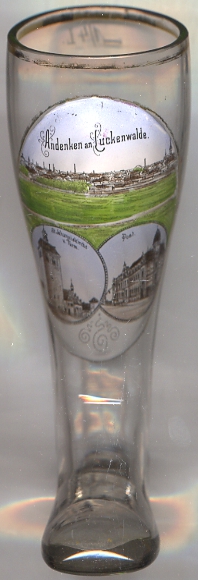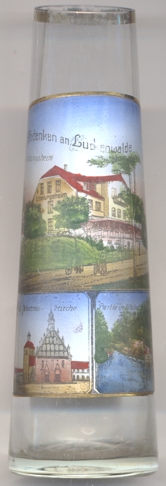

|
| DEUTSCHLAND | GERMANY |
| Bundesland: Brandenburg | |
| Landkreis: Teltow-Fläming |
 Luckenwalde is situated at an elevation of 48 m about 50 km south of Berlin in the German state of Brandenburg.
Luckenwalde is the capital of the distict Teltow-Fläming; the municipality has a population of about 20,200 (2011).
Luckenwalde is situated at an elevation of 48 m about 50 km south of Berlin in the German state of Brandenburg.
Luckenwalde is the capital of the distict Teltow-Fläming; the municipality has a population of about 20,200 (2011).
The former Slavic settlement of Lugkin was conquered by Margrave Conrad of Meißen in the course of the 1147 Wendish Crusade. Lukenwalde Castle was first mentioned in a 1216 deed as a burgward of the Bishopric of Brandenburg, it was acquired by Zinna Abbey in 1285. Together with Zinna it remained under the rule of the Archbishopric of Magdeburg and its successor, the Prussian Duchy of Magdeburg until it was attached to the Margraviate of Brandenburg in 1773. Originating in the 17th century, Luckenwalde's cloth and wool factories did not spring up till the reign of King Friedrich II of Prussia and soon were among the most extensive in Germany. Other traditional industries were cotton printing and a dye works, brewing, and the making of metal and bronze goods. In 1808 Luckenwalde officially received town privileges. [http://en.wikipedia.org/wiki/Luckenwalde, https://de.wikipedia.org/wiki/Luckenwalde]
The  Marktturm (Market Tower) [bottom picture: left]
is the popular landmark of Luckenwalde. The 38 m high tower is located in the centre of the old town, in the market square.
Its oldest parts date from the 12th and 13th century. Since 1484 the tower is used as the bell tower of the
Marktturm (Market Tower) [bottom picture: left]
is the popular landmark of Luckenwalde. The 38 m high tower is located in the centre of the old town, in the market square.
Its oldest parts date from the 12th and 13th century. Since 1484 the tower is used as the bell tower of the
 parish
parish
The bottom right picture on glass no. 2818 shows a view of the former
 post
post

Glass no. 3056 [left] shows three views of old Luckenwalde.
The top picture shows a view of the  Erholungsheim “Waldschloss”
Erholungsheim “Waldschloss”
The bootom left picture shows a view of the
 Johanniskirche
Johanniskirche
The bootom right picture shows a view of the
 Elz valley
Elz valley
![[scale]](lineal.jpg)